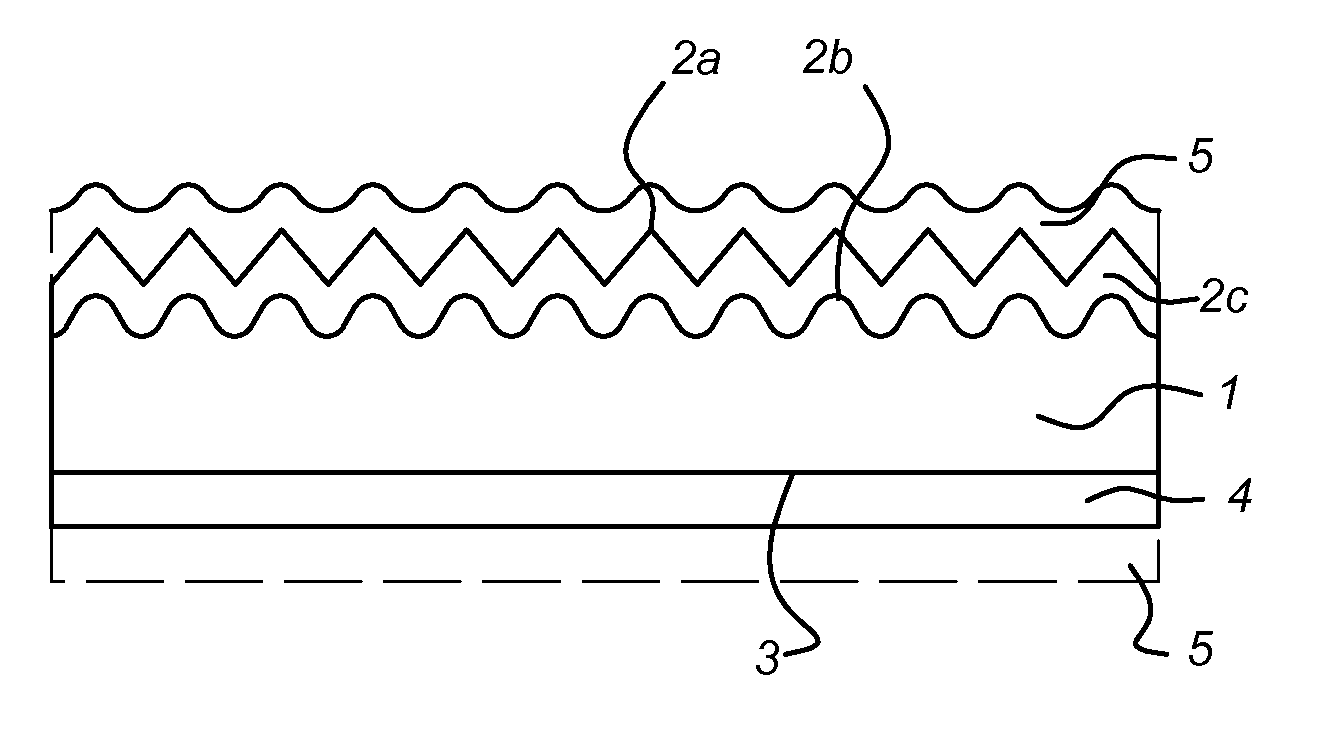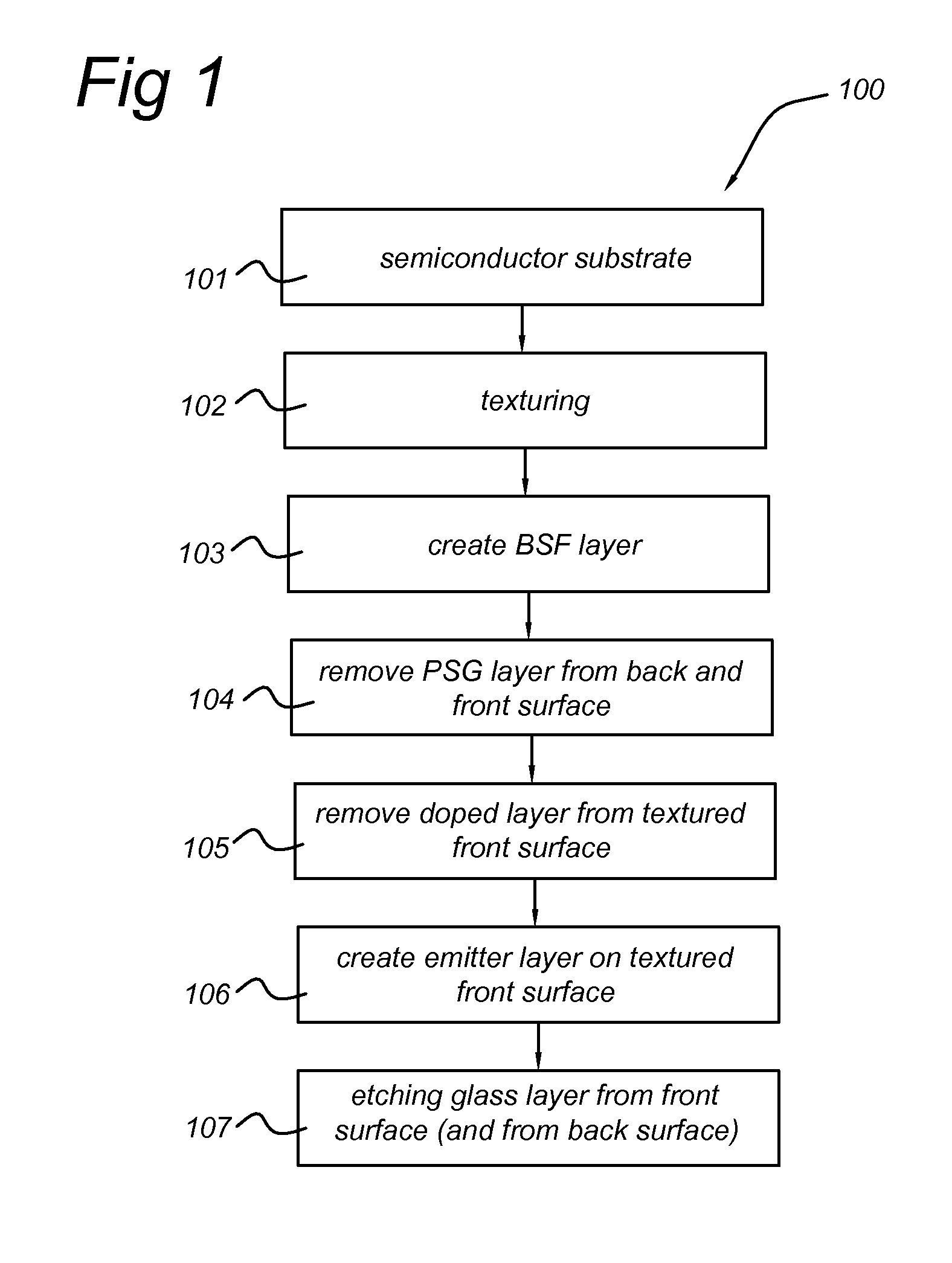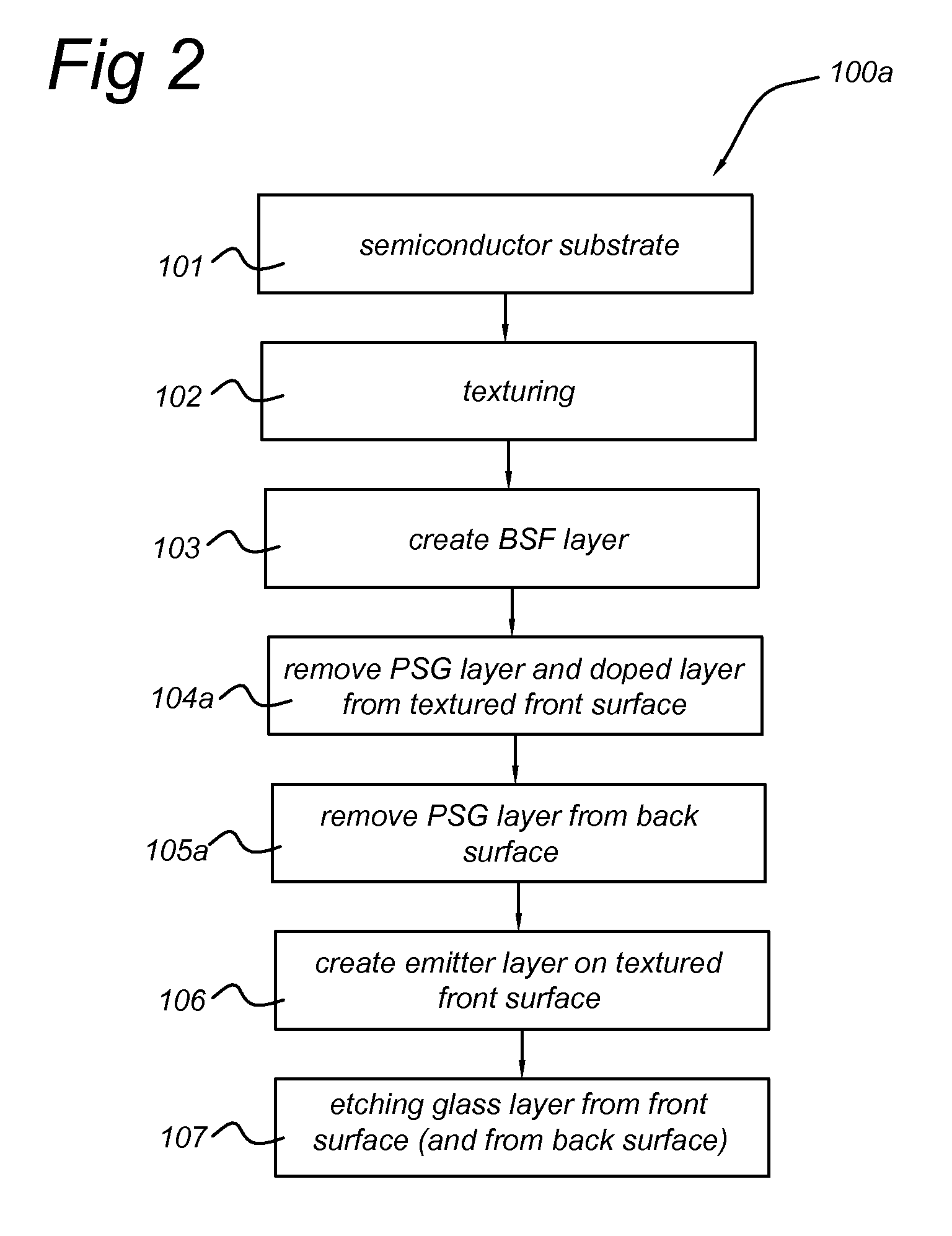Solar cell and method for manufacturing such a solar cell
a solar cell and manufacturing method technology, applied in the field of solar cells, can solve the problems of reducing the yield of the manufacturing process, adversely affecting the efficiency of the solar cell, and contaminating the front side of the substrate,
- Summary
- Abstract
- Description
- Claims
- Application Information
AI Technical Summary
Benefits of technology
Problems solved by technology
Method used
Image
Examples
Embodiment Construction
[0062]FIG. 1 shows a flow diagram for a method for manufacturing a solar cell in accordance with a first aspect of the invention.
[0063]According to the first aspect, the method comprises a sequence 100 of processes to manufacture a solar cell with either p- or n-type base.
[0064]Below, the sequence 100 is illustrated for a solar cell with n-type base.
[0065]A single crystal or multi-crystalline semiconductor substrate i.e., a silicon substrate 1 with n-type conductivity is provided as precursor for the solar cell. The silicon substrate has a front surface 2 and a back surface 3. The front surface is arranged as surface for receiving light during use of the solar cell.
[0066]In an alternative embodiment, the silicon substrate is doped to have a conductivity of p-type.
[0067]FIG. 5 shows a cross-section of the silicon substrate for manufacturing the solar cell.
[0068]Referring again to FIG. 1, next, in process 102, the method provides texturing of the surfaces 2, 3 of the silicon substrate...
PUM
 Login to View More
Login to View More Abstract
Description
Claims
Application Information
 Login to View More
Login to View More - R&D
- Intellectual Property
- Life Sciences
- Materials
- Tech Scout
- Unparalleled Data Quality
- Higher Quality Content
- 60% Fewer Hallucinations
Browse by: Latest US Patents, China's latest patents, Technical Efficacy Thesaurus, Application Domain, Technology Topic, Popular Technical Reports.
© 2025 PatSnap. All rights reserved.Legal|Privacy policy|Modern Slavery Act Transparency Statement|Sitemap|About US| Contact US: help@patsnap.com



